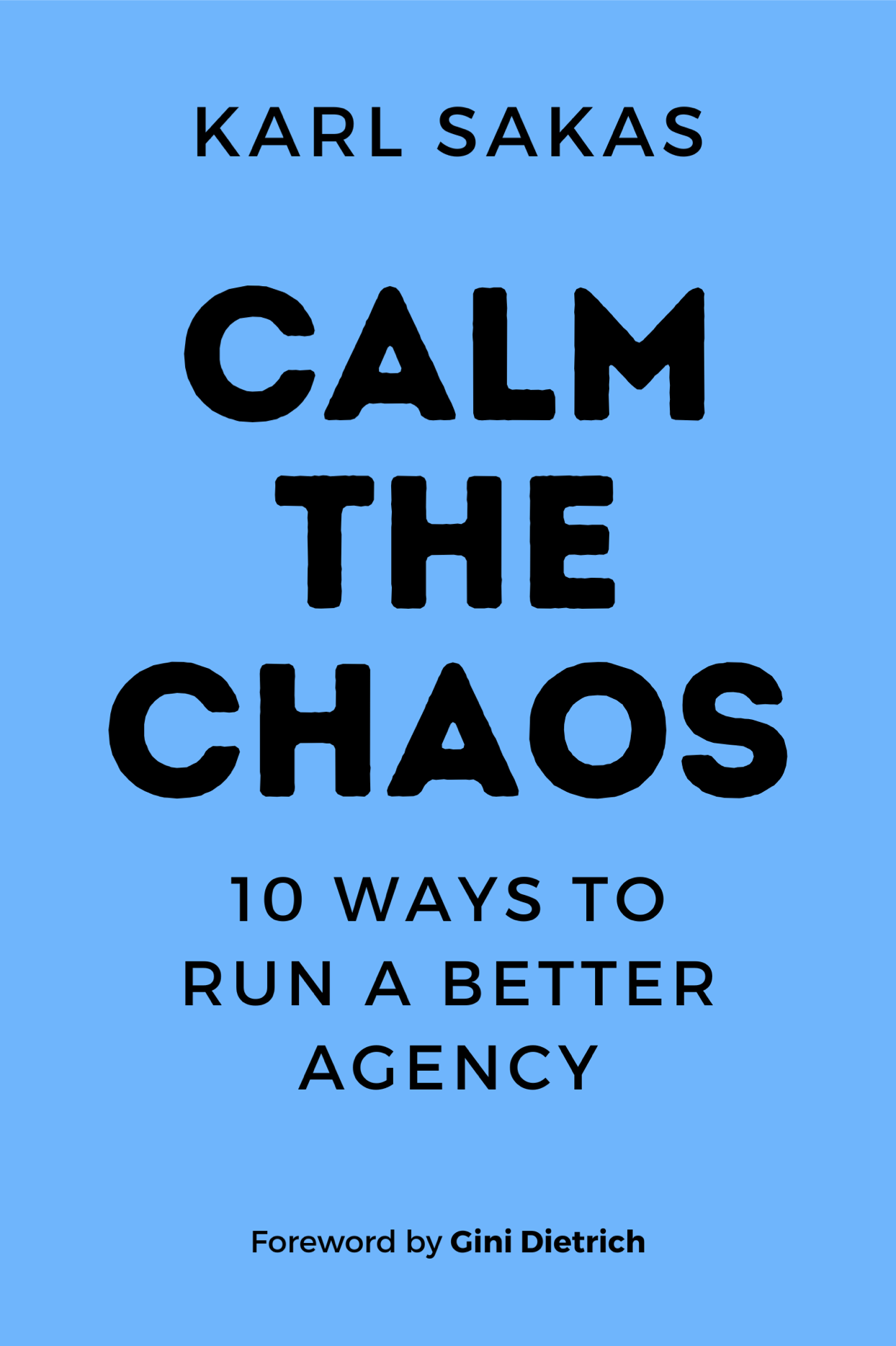Managing people is tough—especially when you’re putting out fires. Running your agency is a lot easier when you’re proactive—but it’s hard to make time to plan ahead.
Fortunately, one small yet powerful change can make a big impact: doing weekly One-on-One (O3) meetings with your direct reports.
I do O3’s myself as a manager, and my top-performing clients do the same. Just 30 minutes a week (per person) can help you boost employee retention, get work off your plate, and prevent problems before they start.
All that in just 30 minutes? Yes! In this article, I’ll share why One-on-One meetings make your life easier, how to implement them with your team, and answers to frequently asked questions.
If you don’t do One-on-One meetings, you’re not alone; this article will help you implement them. And if you currently do O3’s, you’ll get some ideas to optimize your process.
Benefits: Why your agency needs weekly One-on-One (O3) meetings
Agency life can be hectic, especially when you’re in a leadership role. When you’re busy putting out fires, it’s hard to plan for the future. And it’s tempting to cut back on relationship-building, since it’s easier to focus on what’s urgent rather than what’s important.
Fortunately, One-on-One (O3) meetings help you prioritize what’s important, rather than just what’s urgent. You’re creating a weekly “appointment” with your direct reports, to catch up on what’s happening with them—and to help them troubleshoot challenges before they become bigger problems.
This ongoing connection can help you retain your best employees, while also taking more work off your plate. In the Abraham Lincoln anecdote about chopping down a tree, O3 meetings are all about sharpening the axe.
Definition: What’s a One-on-One meeting?
For agencies, a One-on-One (O3) meeting is a pre-planned, semi-structured conversation with each of your direct reports. Although they may touch on current projects, they’re focused on relationship-building rather than a status review.
The goal is to connect with your employees, so they feel seen and heard. And the ongoing cadence helps you identify problems—and opportunities—sooner than later.
I’m a fan of the Manager Tools model for One-on-One (O3) meetings; you can read more about that here, including their handy PDF template (subscription required). I also recommend their The Effective Manager book, and their virtual Effective Manager Conference training.
If you have a daily standup, you might be meeting one-on-one—but I wouldn’t consider that to be an “O3” meeting. Why? Because the standup is focused on the current work, rather than the employee-manager relationship.
Speaking of that, let’s look at what to include the O3 agenda.
Agenda: What to include in your O3 meetings
To summarize (via Manager Tools), O3 meetings are [ideally] 30 minutes every week, with each of your direct reports, in a 1:1 format. They follow a specific agenda over than 30 minutes:
- Them: 10 minutes about whatever the employee wants to discuss
- You: 10 minutes about what you want to discuss
- ProfDev: 10 minutes about the employee’s professional development
That first of the three sections is really important—you’re creating space for your employee to ask about whatever is important to them. I open each O3 by asking simply: “What would you like to discuss? This gives them an opportunity to get advice, talk things through, or just share about life in general.
After their first O3 with me, an employee in their early 30s said: “That’s the first time a boss has ever asked me what I wanted to talk about.” If you were an employee, you’d want a boss who listened, right?
The “profdev” section is a mix of long-term planning (e.g., discussing leadership development opportunities, or up-skilling that requires more than a few minutes or a few hours), and short-term changes (e.g., confirming they made a process change you requested, or that they followed up about a high-priority item).
Why every week? Read on…
Timing: Why to do a weekly cadence on One-on-One meetings
Concerned you can’t dedicate 30 minutes every week? In my experience, you can’t afford not to invest that 30 minutes a week! By having a “standing” weekly conversation, you can reduce your daily interruptions, without blocking your employees’ progress on long-term initiatives.
Weekly is often enough that employees can ask questions while things are fresh—and you can share constructive feedback while it’s still timely. In some cases, you might choose to do an hour every other week—perhaps for a part-time employee, or someone who otherwise isn’t working every day of the week. But consider weekly (for 30 minutes per person) as a default.
Remember, O3’s are separate from a daily or weekly standup, department or production meeting, or group-based executive team meeting. You’re dedicating time to a specific person, rather than everyone at once. If you have an employee who likes getting “facetime” with you as the boss, O3’s can help scratch that itch, without them interrupting you all day long.
Doing weekly O3’s also helps you see when employees are stuck. If you’ve talked about a concern several weeks in a row—or an employee doesn’t seem to be making progress in a key area—you probably need to change how you’re approaching things. That’s not a fun conversation, but it’s better than letting things fester for months—or not realizing at all until it’s too late.
Don’t feel like you have time to do 30 minutes a week, because you have too many direct reports and you’d be in O3 meetings forever? That may be a sign of a different problem; read on!
Participants: Which team members should get O3’s
You should do O3’s with each direct report—that is, each person who sees you as their direct boss. The exact list will depend on your role and how you’ve structured your agency:
- If you’re the agency CEO or President, your direct reports are likely the entire executive team.
- If you’ve outsourced day-to-day leadership to a COO or President, your direct reports would be the President/COO, the head of your growth team, and your assistant.
- If you’re leading day-to-day operations, your direct reports are likely the department heads (directors or managers), and potentially team leads who operate as quasi-directors (but may not have that “director” title).
- If you lead a specific department, your direct reports are probably the entire team (or perhaps the “Lead XYZ” or “Senior XYZ” team members, if the more-junior people report to the leads).
Not sure who’s on your list of direct reports? That likely indicates one or more problems:
- If you have more than 5-7 direct reports, you probably have a “span of control” problem (where you have too many direct reports to operate effectively). It’s probably time to add a managerial layer, so that not everyone reports directly to you.
- Not sure if someone reports to you? They’re probably not sure, too! Get clear on who reports to whom; employee confusion rarely leads to employee retention.
- Got someone who reports to you and another person? This “two bosses” situation rarely makes sense; decide which person is their primary boss (and let the secondary boss step back).
If one or more of those problems sounds familiar, step back to fix the problem. Otherwise, you’re risking avoidable employee turnover.
Prep: How to prepare for O3 meetings
As a client observed, “planning takes planning.” If you want to get better results from your One-on-One meetings, take a few minutes to prepare.
I keep a blank stack of printed Manager Tools O3 templates handy. As I think about topics for someone’s next O3, I add them to the doc. That way, they’re waiting for me when I start the meeting. Having the “running doc” (for the week) handy helps me share timely feedback—I make a note about covering the topic, and it’s waiting for me in the second 10-minute segment (the “what the manager wants to talk about” portion).
As a result, I can dive into the meeting after scanning the current and prior week’s printout—I review the list of topics I plan to cover, along with brief review of what we discussed last time (so I can ask about followups, if I haven’t seen them already).
Where: Doing O3’s virtually or in-person
I like doing O3’s by phone. I can step away from the computer and focus on the call, using my Manager Tools worksheet to organize the call. Being “present” helps you be a more active listener, and your employee can “hear” that you’re present.
You can also meet via video. And if your team is hybrid, you can meet in-person. But ultimately, you’ll want to find a format that works for you—and that works for your team.
Delegation: What about your direct reports doing their own O3’s?
Yes, your direct reports should do O3’s with their direct reports. But I recommend rolling-out O3’s to your immediate team first, before you do it agency-wide. This will give you a chance to troubleshoot the process, before it touches events.
Nope: What NOT to do in O3 meetings
Want to get better results? Consider:
- Don’t make the O3 meeting all about you. Yes, you have points to convey. But O3’s are about relationship-building, and helping your employee improve… not about hearing your own voice.
- Don’t interrupt your employee, especially during the first third of the meeting. This is their time, not your time.
- Don’t reschedule O3’s unless absolutely necessary. You want to show employees that you respect them.
Ready to do your first One-on-One meetings? Excellent; read on!
Launch: How to start doing O3’s for the first time
Haven’t done O3’s before, or they’ve been unstructured and/or inconsistent? Congrats on making a change! Your team will appreciate the effort… and the extra “facetime” with you.
- Review the Manager Tools content about O3 meetings. You can read their book, or check out the podcast episodes about O3 meetings.
- Do an O3 with one of your direct reports. You’ll probably want to schedule more like 45-60 minutes for the first one; I’ve found they tend to run long when people have a “backlog” of things they’ve wanted to discuss.
- See how it goes, and get their feedback. Make adjustments.
- Add another O3, and adjust again. Fine-tune the process.
- Roll out the O3’s to 100% of your direct reports.
Short: Consider having employees self-schedule their O3’s with you on a rolling basis, for at least a month in advance. You may choose to set certain business rules—for instance, no O3’s earlier than or later than a particular time, or targeting O3’s on certain days of the week. I like that this makes employees responsible for making the meeting happen, while fitting into the “business rule” guardrails.
You and your team can make the O3 process your own. My suggestions and the Manager Tools guidelines will help, but you need to make things work for you. Speaking of that… let’s make things better at your agency!
Next Steps: Starting (or Rebooting) One-on-One meetings at your agency
Based on what I’ve shared, consider your next steps. If you’ve never done O3’s before, read the Manager Tools resources (linked above) to organize the rollout. If you’ve done O3’s and you want to restart, consider what changes you’ll make this time.
Whatever you do, get your team’s feedback. This can feel like a big change for everyone, and change management can be hard—even when it’s something that benefits everyone.
Want to take it to the next level? Growing your agency requires growing as a leader. To get there faster, consider applying to my Agency Leadership Intensive. The live, virtual, cohort-based program is designed to help you up-level your agency by up-leveling your leadership. The leadership development program requires an application, but it’s free to apply. Learn more here.
Question: What will you change about O3 meetings at your agency?


